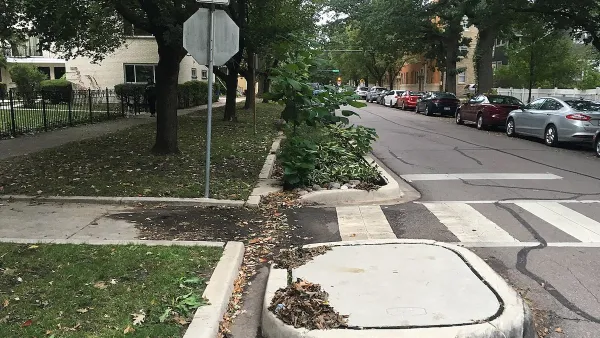How China embarked on an ambitious national plan to capture stormwater.

Writing in WIRED, Matt Simon warns, “Your city was built for a climate of 100, 200, 300 years ago, but that climate no longer exists.”
To that end, cities are finding new (and old) ways to manage and capture stormwater. “The hot new strategy in urban design, which was pioneered in China, is to slow everything down. Since 2013, China has embarked on a national policy to turn its growing metropolises into sponge cities, which capture stormwater instead of disposing of it all.”
WIRED interviewed Kongjian Yu, champion of the concept and founder of the Beijing design firm Turenscape, who says “A sponge city can be on any scale.”
According to Yu, “You have to solve the problem holistically, and the sponge city is a nature-based, holistic solution. It is inexpensive, and it can be done at a small or large scale. You can have your garden, but you also have to plan from the top. It is a sponge planet, it is a sponge countryside, it is a sponge urban district.”
For cities looking to build more resilient green infrastructure, Yu says “ if you come to the green alternative, you will not only save money, but the impact will be more immediate. The sponge city is basically using free nature.”
FULL STORY: The Designer Who’s Trying to Transform Your City Into a Sponge

National Parks Layoffs Will Cause Communities to Lose Billions
Thousands of essential park workers were laid off this week, just before the busy spring break season.

Retro-silient?: America’s First “Eco-burb,” The Woodlands Turns 50
A master-planned community north of Houston offers lessons on green infrastructure and resilient design, but falls short of its founder’s lofty affordability and walkability goals.

Delivering for America Plan Will Downgrade Mail Service in at Least 49.5 Percent of Zip Codes
Republican and Democrat lawmakers criticize the plan for its disproportionate negative impact on rural communities.

Test News Post 1
This is a summary

Test News Headline 46
Test for the image on the front page.

Balancing Bombs and Butterflies: How the National Guard Protects a Rare Species
The National Guard at Fort Indiantown Gap uses GIS technology and land management strategies to balance military training with conservation efforts, ensuring the survival of the rare eastern regal fritillary butterfly.
Urban Design for Planners 1: Software Tools
This six-course series explores essential urban design concepts using open source software and equips planners with the tools they need to participate fully in the urban design process.
Planning for Universal Design
Learn the tools for implementing Universal Design in planning regulations.
EMC Planning Group, Inc.
Planetizen
Planetizen
Mpact (formerly Rail~Volution)
Great Falls Development Authority, Inc.
HUDs Office of Policy Development and Research
NYU Wagner Graduate School of Public Service




























